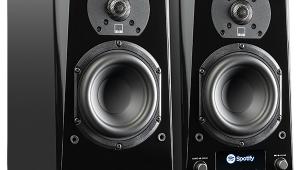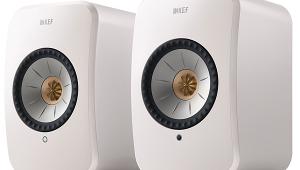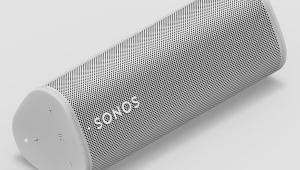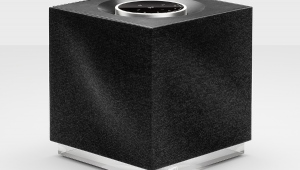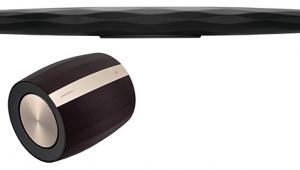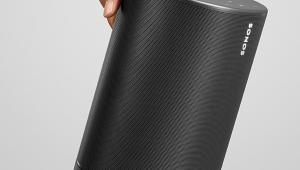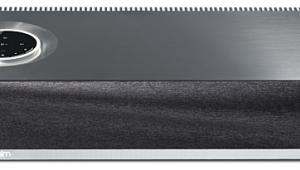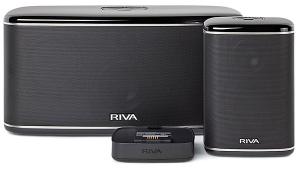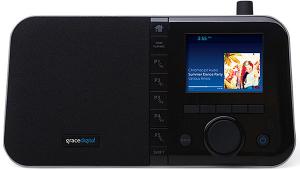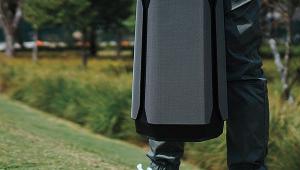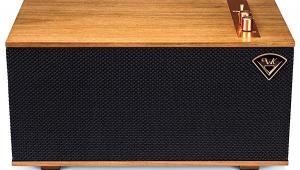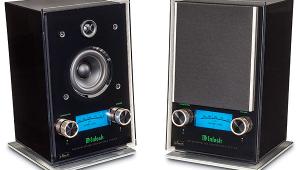Riva WAND Wireless Music System Review Page 2
Along with the Google Home app used for setup, Riva has their own downloadable iOS/Android WAND app. If you’re not sourcing music from a streaming service, you can use this app to control playback of content from a USB drive, a network-attached music server, or your phone’s resident music library, or to select among any of the available inputs. You can also select the output mode for each individual speaker on your network from among four different choices. Trillium is the default factory mode, which sends a stereo signal to the speaker and performs the aforementioned processing. Power mode is a spin-off of the Turbo button introduced in the Turbo X; it provides the Trillium upmix but kicks in a few extra decibels of gain if you need it. You can also select the Left- or Right-only mode to create a stereo pair. Once you have two speakers designated as such, you create a group for those two with the Google Home app. However, Riva offers no detailed instructions in their user manual for this setup. And in practice, it was an inefficient process that involved manually balancing the left and right volume levels (in my case, using a pink noise track and SPL meter for the purpose of my review, though others might approach it less rigorously). Perhaps Riva can simplify this process with a future app update.
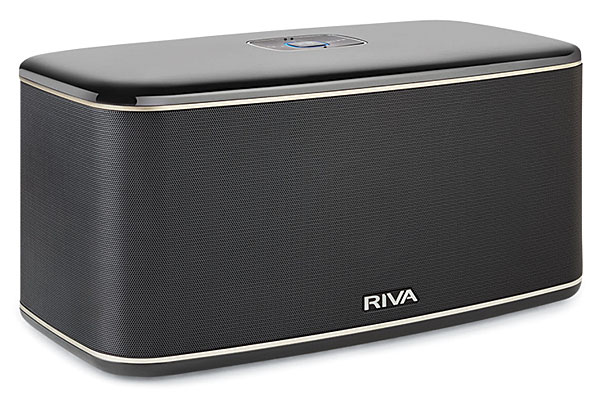
A Festival of Sound
I mounted the Festival on a speaker stand 10 feet from my listening seat, at ear height. I then fed it (via Chromecast or AirPlay) a variety of well-recorded, mostly CD-quality (44.1-kHz/16-bit) test tracks from Tidal HiFi and my Plex media server. The Arena was auditioned similarly, first on its own and then in a stereo pair with the speakers about 8 feet apart. I also did direct A/B comparisons with some similar speakers I had on hand, including the Sonos Play:1 and Bluesound Pulse Flex ($199 and $299, respectively, each a fair match for the Arena) and the Bluesound Pulse 2 ($699, considerably more expensive than the Festival after the latter’s recent $100 price drop, but somewhat comparable in size).
There was no question from the start that the big Festival is voiced to sound as rich and full at the bottom as its drivers, amps, and digital signal processing can muster. Swept test tones and casual pink-noise measurements revealed, in my room, a relatively flat response through the lower midrange, a subtle goosing around 200 hertz to add some fullness, and then another little bump near the speaker’s lower limit around 60 Hz before it finally dropped off below 50 Hz. The end result was a surprisingly impactful low end that, with most songs, seemed to know exactly when to stop pushing its luck. The EDM track “Like,” from Cuthead’s Return of the Sample Jesus, starts with a repeating electronic bass drum beat and what sounds like tapped cowbell as counterpoint, and it nicely demonstrated the Festival’s combination of clear, detailed highs at one extreme and capable bass performance at the other. It filled up the room and made me take notice of the low end but without pushing into tubbiness or distortion. It couldn’t get nearly deep enough to deliver the chest blows that this track really calls for (that would be asking too much of any like-sized speaker), but the Festival held its own. Even at loud volume—Riva claims 106 dB max, and I measured 95-dB peaks in my space—it never went into obvious strain or distortion, and it delivered the track with an excellent sense of dynamics. Still, on some tracks played in my room (Grover Washington’s “Mr. Magic,” for example), the Festival could indeed cross over into a slightly bass-heavy balance. Unfortunately, there were no bass/treble trims in the Riva app to take things down a click to accommodate different rooms or placements, or when the content seemed to demand it. This might be something else for Riva to consider adding in an update.
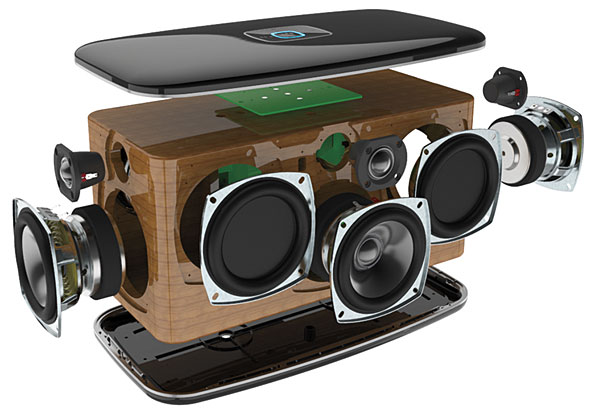
The Festival’s ability to render fine detail and the crisp leading edge of musical notes was driven home with a cover of the Beatles’ “I Will”—the twangy, banjo- and guitar-infused version by Alison Krauss and Tony Furtado, included in her collection Now That I’ve Found You. Each pluck of the long intro stood out in relief, and when Krauss’s sweet, wavering vocal came in, it floated with solidity and body. It was obvious on this and other tracks that the Festival threw a big, dimensional image, exceptionally wide for a single speaker (though not equivalent to a wide stereo pairing) and with a modest but noticeable degree of specificity within the image—concurrent with what you’d hear from a separated stereo pair, just more squished together. On the instrumental version of Chet Baker’s “Street of Dreams,” for example, I could make out the left-to-right spread of horn, upright bass, strings, and backup horns, with the drum kit slightly behind. Meanwhile, Robert Plant’s vocal on “Going to California,” from Led Zeppelin’s 1971 Paris Theatre performance in London, clearly resonated with the acoustic air of the intimate 400-seat venue and worked in sync with the Festival’s imaging for a convincing and engaging rendering.
Direct comparisons on these and other tracks with the Bluesound Pulse 2 began to hint at the cleverness of Riva’s Trillium technology, while also exposing its modest compromise. The Pulse 2, designed by PSB’s Paul Barton, is a very fine speaker—well balanced, highly detailed, and fairly revealing of source material. Like the Festival, it is capable of eyebrow-raising bass for a box of its size, and a reasonably wide and tall soundstage with its stereo driver array. In the side-by-side comparison, I quickly noticed that the Pulse 2 delivered Krauss’s vocal with more immediacy and focus than did the Festival, which placed a subtle touch of reverb on her voice and set it back slightly in the soundstage compared with the Pulse 2. I eventually came to hear a similar effect (which I gather was the Trillium processing and multi-baffle driver array at work) on centered vocals in other tracks I listened to on the Festival and later on the Arena, though it wasn’t readily apparent on instruments or backup vocals that were further off center in the mix. I should stress that subtle is the operative word here; in the absence of intimate familiarity with a track or a direct comparison with a more conventional speaker design, it wasn’t necessarily something I’d have noticed. Nor did the effect seem to change the musicality or timbre of voices or instruments in that central zone; rather, just the perception of the acoustics of the space they were in.
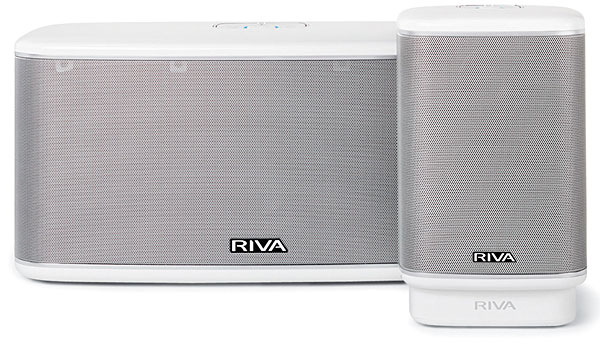
But, the more I listened, the more I understood the method to Riva’s madness. The Festival delivered a far more palpable, three-dimensional image that upped the engagement factor considerably and made the music come alive. The additional spread and depth of the Festival’s image on the Baker track, for example, allowed each of the instruments to stand distinctly apart, each with its own air around it, and made the upright bass, the drums, and the massed string accompaniment all more discernible and easier to follow. Critically, instruments and voices individually had more body, irrespective of the tight soundstage. Simply put, the Festival, with its Trillium technology, did a better job of putting the players and singers in the room with me. Reminding myself that this is a relatively inexpensive lifestyle speaker system not intended for a hard-core audiophile application (or critique, for that matter), I came to see this as a justifiable, judiciously applied, and even canny design—especially after auditioning that other WAND speaker.
Enter the Arena
You could buy a stereo pair of the affordable Arenas for the price of a Festival. And you might even want to do that, because as good as the Festival is, the Arena is pure friggin’ magic. I can’t say if it’s the closer proximity of the Arena’s three baffles that makes it behave more like a point source than the Festival and ends up benefitting the Trillium spatial effect, or if the Arena’s single full-range driver (and lack of crossover) brings something special to the table. But putting aside the obvious size-imposed limitations on its bass output, and accounting for the same subtle reverb effect sometimes heard with the Festival, I can say that the Arena’s ability to throw embodied instruments and voices into the room, and put space and air around each, was nothing short of remarkable. From the first notes of my first track, I sat back and said, “Whoa!” I don’t want to diminish the accomplishment that is the Festival, but not only is this speaker more open and transparent than its big brother, it adds noticeable front-to-back depth and dimensionality to the soundstage and populates it well with engagingly solid images. In this regard, it totally trounced the Play:1 and Bluesound Pulse Flex. Those speakers—both very good in their class and well recommended by Sound & Vision and others—sounded great but were ultimately flat and lifeless by comparison. They delivered some additional high-end extension and detail, but they just couldn’t pull me into the music the same way. Once I heard the Arena, it was hard to go back.
I ran through a series of tightly miked pop tracks that got my juices flowing. Buddy Holly’s “True Love Ways” was a revelation; his magnificent, giant vocal and the accompanying strings floated well above the little speaker, with every detail in his key-shifting, quavering voice revealed. Keeping with the oldies, I cued up Eddie Holman’s 1969 classic “Hey There Lonely Girl.” I listened as the Arena caressed the singer’s famous falsetto at high volume, never becoming hard or edgy, and I marveled at how it instantly delineated and physically separated in space the combination of female and male vocalists who come in a cappella on the second verse to sing, “You think that only his two lips….” The Arena blew me away again on Natalie Cole’s hit “This Will Be (An Everlasting Love),” with its big opening piano notes, prominent handclaps, Cole’s deliciously smooth and scat-like vocalizations, and finally, the dynamic blare of the entering horn section that kicks off the song in earnest. I was literally off my chair, dancing around my listening room. Whatever the Arena’s got, it’s good stuff.
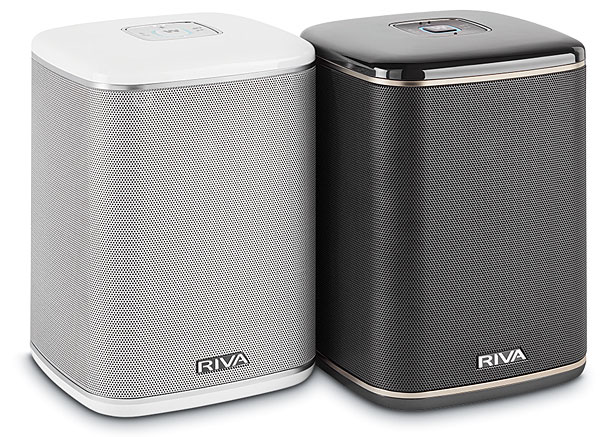
And it follows that the Arena’s got even more of it when two are paired for stereo. I moved on to this in short order and, not surprisingly, found that the soundstage got both wider and deeper, and that instruments and vocals suddenly got the breathing room around them that they needed for a truly convincing rendering. Those old pop tracks came even more fully alive, with background strings and voices taking on additional body and emanating from clearly distinct and better-separated positions. I tossed on one of my old go-to test tracks, “Song of Bernadette” from the audiophile classic Famous Blue Raincoat, and listened to a seemingly life-sized Jennifer Warnes sing from dead center, with the piano immediately right and the strings in back left—all delivered with the sweet, luscious textures and detail I’ve come to expect from this track on high-quality component rigs. Only the modestly compressed dynamics gave away that the entire system here was a pair of $250 powered speakers, each not much larger than a Foster’s Lager 25-ounce oil can. The musicians in the Baker track, while not projecting from a full-size soundstage, took on more appropriate perspective now that the space they inhabited stretched to just beyond the outer edges of the speakers, and each benefitted from an obvious enhancement of depth and body.
Conclusion
I came away from my WAND auditions very impressed by the Festival, and hugely so by the sound quality and value of the little Arena. It wasn’t a perfect experience. I found Chromecast’s multiroom interface a bit of a letdown after living day-to-day with Sonos (perhaps AirPlay 2 will end up being a more friendly option for iOS users). And I would have loved to have more bass from the Arena, though it performed mightily well in that area for a compact speaker and better than its direct Sonos and Bluesound competition did.
But, these are small quibbles. In the final analysis, the Festival and Arena delivered a crazy-high level of engagement with the music that made my blood flow and kept me punching up track after track. There can be little doubt: If the intention with the WAND series is to emotionally connect more listeners with their music and make them sit up and take notice, then Riva will succeed in spades.
